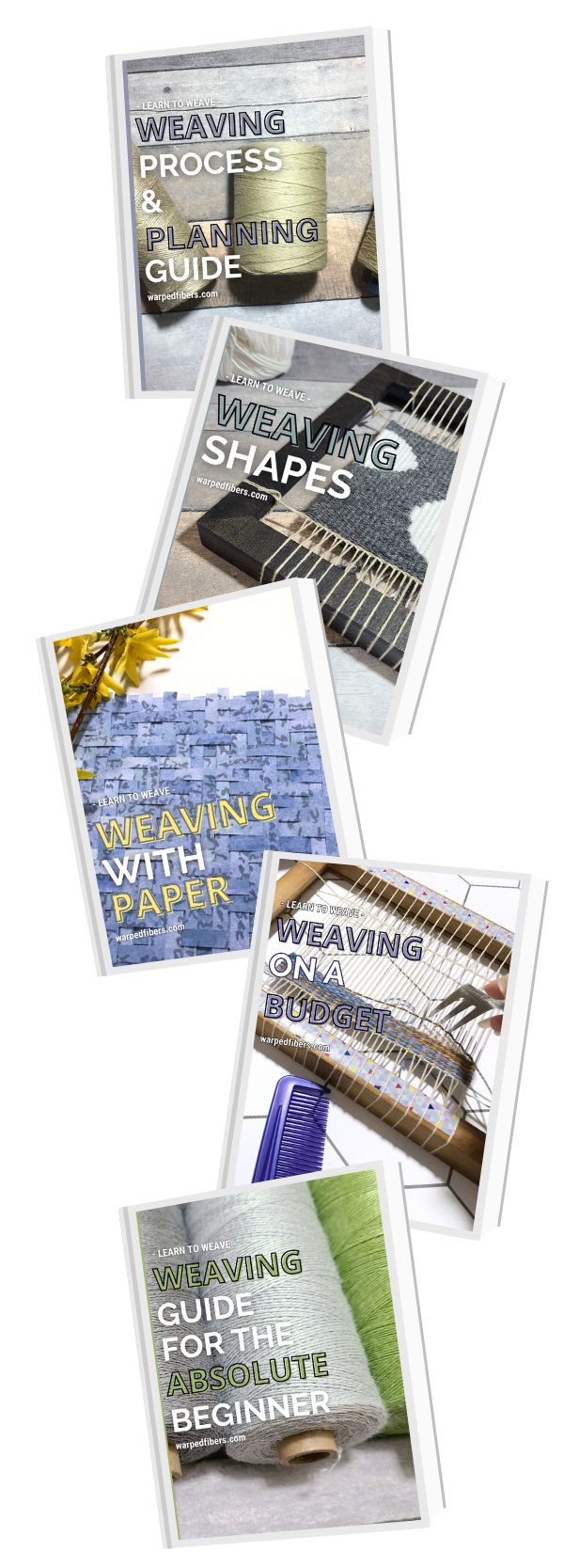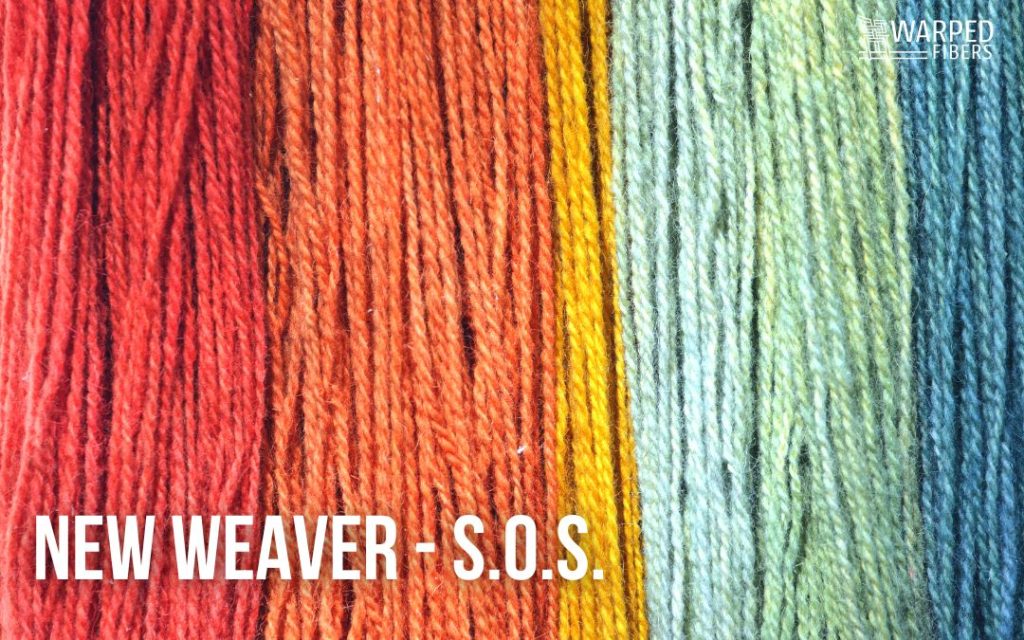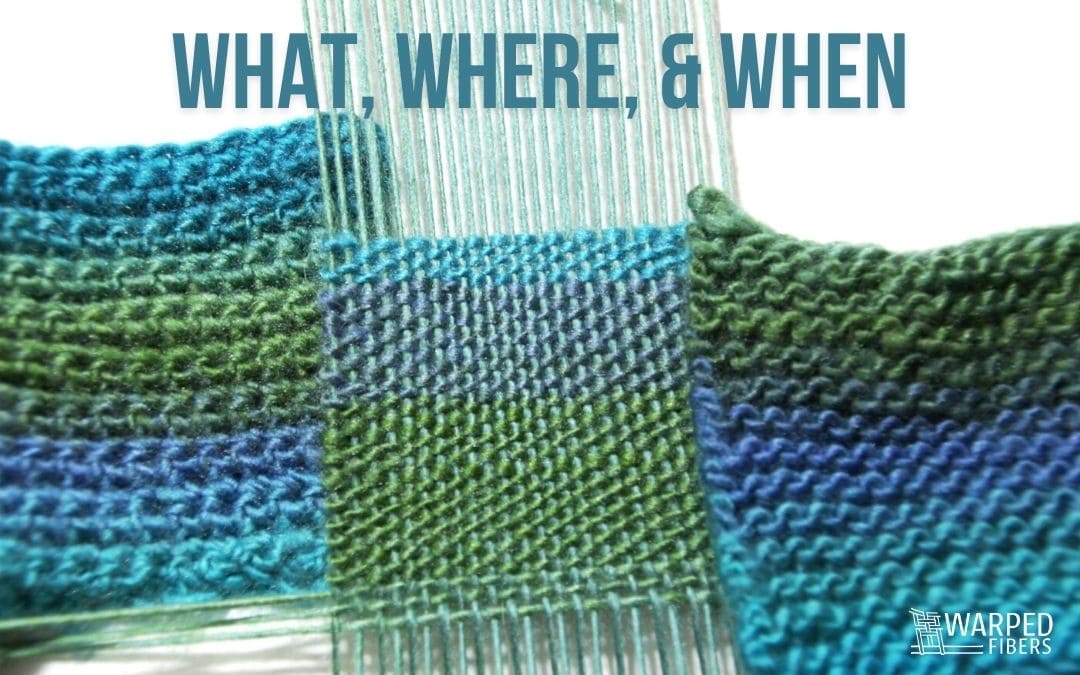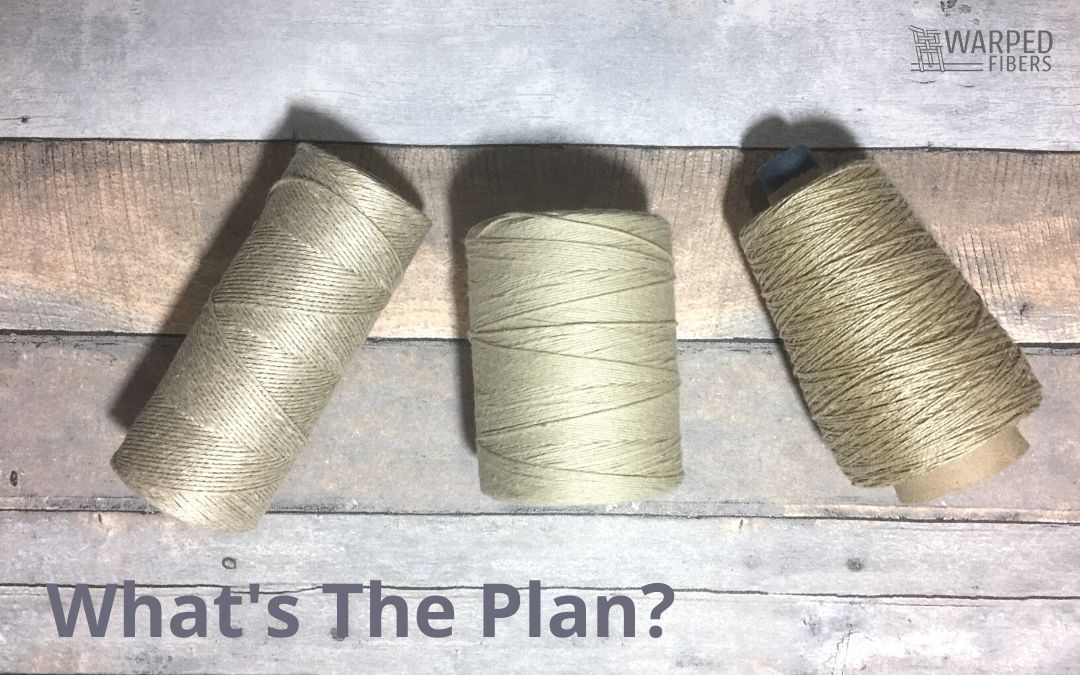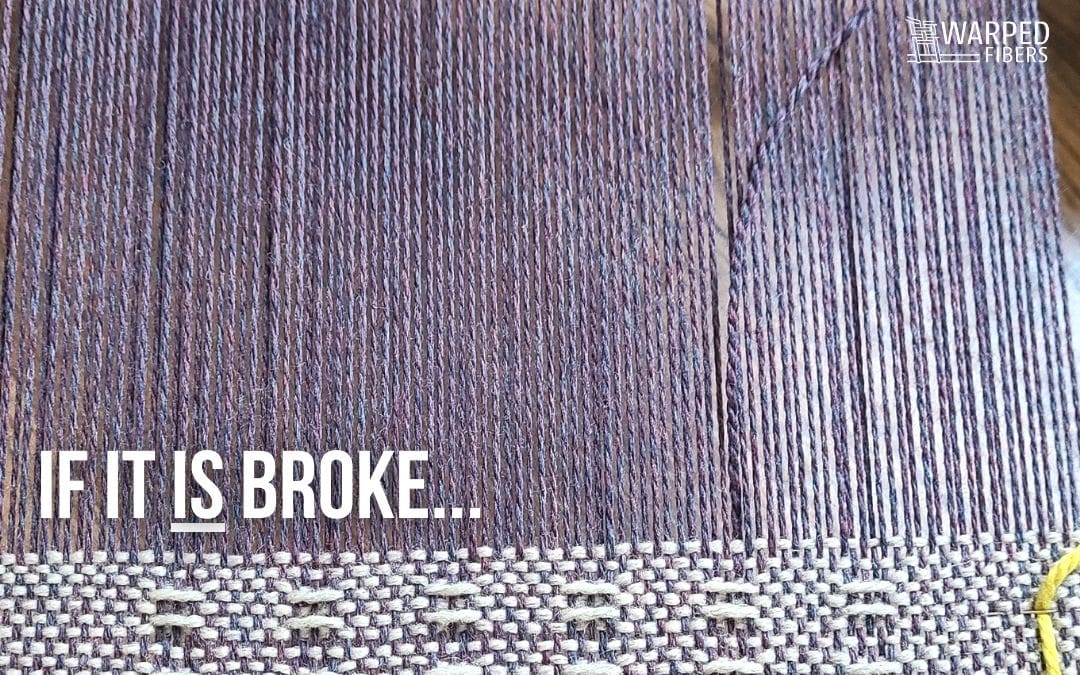When it comes to weaving, the idea of beating your weft might seem like a pretty straightforward topic, but really there is a lot more to it than you might think!
First, though, what is your beat?
Your beat is the way and strength behind how you place your weft in your weaving. On multi-shaft looms, your reed is actually a part of your beater. When weaving tapestry you are probably using a tapestry beater. The beater is the tool, your beat is your “style”.
Your beat is incredibly important because not only does it change the way your weaving looks, but it can also change the way your weaving behaves, and the way you behave when you are weaving.
Depending on what you are weaving, you may be beating your weft too hard or not hard enough! So how do you know what to do for your specific weaving?
Jump To:
You may be beating too hard
It is really easy to beat way too hard when you are weaving a balanced weaving or patterns. I mean the word “beat” really makes you think that you have to put your entire body into it to make sure it goes where it needs to.
The fact is, that if your EPI is correct for the warp and weft you are using and you have set up your weaving correctly, then you really should not need to put all your strength into your beat.
You want to weave with the idea in your head that the wefts will not be touching. There should be little open squares between your warp and weft, which also allows you to easily see both the warp and the weft. If you are only seeing your weft or barely seeing your warp, then your beat is probably off. Creating these squares means you are building in space for your weaving to change when it is finished.
This is a really important thing to remember. Your weaving will change! That is one of the amazing things about a finished weaving is how it transforms when no longer under tension and once it has been wet finished.
After a weaving has been taken off the loom it will relax. Your yarn will no longer be stretched and it will settle into place. This will give you a better idea of the drape and flow of the weaving.
Once it has been washed and dried your yarns will bloom! If you are weaving with protein and cellulose yarns then it will open up a bit and get softer. Your wool and cotton will probably shrink up a bit and close up those little holes that you were so worried about before.
The towel in the image below 100% cotton yarn with an even beat. After washing, you can see that the holes have closed up to create a more even weaving suitable for a towel!
This tea towel pattern is available for download for Linen and Modal Patrons! You can join here!
If you weave without the “addition” of these little square holes then you can expect a few different things.
First, you are putting way too much stress on yourself and possibly your loom. Trying to push your weft into a space that it does not want to be will only make your weaving experience less fun, less calming, and more expensive.
Yep, more expensive (this is the second point), because you will be using more yarn than you need to! If you are beating your weft too hard then you are increasing your PPI which results in using up more yarn than you would if you were beating correctly.
Yarn is expensive! Don’t use more than you need to.
Third, if you beat too hard then you are forcing more weft into your weaving and changing it’s PPI and density. Denser fabric does not drape as well. Depending on what you are making, this may not be an issue, but it is still important to understand.
There are now 2 ways to take it – either purchase the whole course at once for a discount or “create your own” course by purchasing just the parts you want! Either way, get 10% off for being a member of the Warped Community!
You are not beating hard enough
I want to start this section off by saying that you usually do not want to ever be beating “hard”. You just want to beat appropriately to what you are creating. If your weaving is set up correctly, then your weft should slide into place exactly where it should go.
This is probably pretty rare outside of weaving weft-faced weavings, but it could happen. If you are worried about beating too hard then you may “pull back” on yourself a little too much and create too much space between your wefts. Again, we are looking for little square holes between warp and weft when we are weaving a balanced weaving.
What if we are weaving weft-faced and tapestry?
Weft-faced weavings are characterized by the fact that you cannot see the warp at all and only the weft. This means that the weft will be beat so that it covers up the warp completely. This is the same for tapestry.
Again, ( I feel like I have said this so much, but…) if you set up your weaving with the correct EPI then this shouldn’t be an issue at all! Your weft-faced weavings will require a much smaller EPI than a balanced weaving so that there is enough space for the weft to fall between your warps. You DO NOT want little holes when you are weaving weft-faced.
The biggest sign that you are not beating hard enough is that you have lice.
Eww. I know.
That is the technical term for when you see little bits of warp (a lot of times it is white) through your weft. For the purpose of making this sound less gross, I will now refer to it as rice instead.
You’re welcome.
Rice happens on a weft-faced weaving either when you are not beating hard enough or your EPI is incorrect. If your warps are too close together (EPI too high) for the weft you are trying to use then it will not compress like you want it to. Instead it will behave more like a balanced weaving.
If your EPI is incorrect you may have to start over or consider doubling your tapestry warp. You can learn more about that here.
When your warp sett is correct, but you are still experiencing rice then beat harder! Don’t be afraid! Make sure your wefts are touching and the rice is gone in order to get the true weft-faced weaving look. With the correct warp sett this should be smooth and not take a lot of energy.
Your beat will be personal to you and your weaving.
Just like a lot of aspects of weaving you have to find your goldilocks.
Sometimes figuring out the exact way you need to beat for your weaving takes some trial and error, but the more you weave, the more you will have a frame of reference for how it feels to create even weavings with perfectly placed weft.
⇣ Love It? Share It! ⇣
You May Also Like















